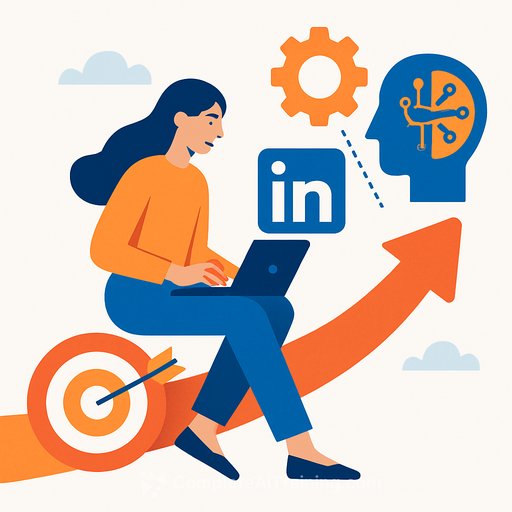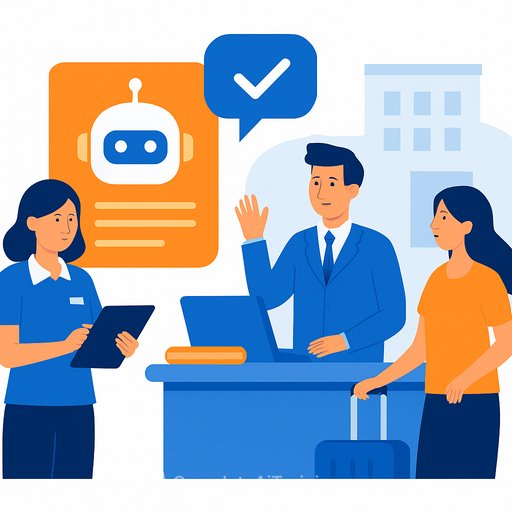Future-Proofing HR Careers as AI Reshapes Work
LinkedIn's latest report makes one point clear: AI is rewriting skill requirements across the workforce. Over 80% of professionals could see at least a quarter of their skills reshaped. One in five job titles today didn't exist in 2000. Generative AI is accelerating that curve.
For HR, this isn't a distant trend. It's a practical shift in how you build skills, design roles, hire, and develop talent. The winners will treat AI as an operating system for work-then elevate the human strengths AI can't match.
What This Means for HR
Some jobs are already changing-communications, marketing, human resources, engineering, and design. Others are next in line: writer/editor, software engineer, data analyst, videographer, librarian, web designer, marketing strategist, accountant, photographer, and translator.
"You need to be realistic that some jobs will be displaced. But in most cases, a lot of these roles have elements that can't be done by generative AI," said Andrew Seaman, editor-at-large for Jobs & Career Development at LinkedIn News. Computer-based roles will feel more impact than roles that require a literal human touch. A dentist is less exposed than a data analyst.
Employee Sentiment You Should Plan For
Workers are anxious. LinkedIn reports 41% feel overwhelmed by how fast they're expected to "get" AI. Pew Research Center found half of Americans are more concerned than excited about more AI in daily life, and many worry it will hurt creativity and relationships. See Pew's findings.
Gallup shows AI use at work has roughly doubled in recent years, yet regular use is still limited: 19% use AI a few times a week and 8% daily. Most people still expect AI to have major societal impact.
Redesign Jobs-Don't Abandon Them
The instinct to flee AI-exposed careers is common, but often wrong. Smart companies use AI to clear low-value tasks so people can spend more time on what's uniquely human-context, judgment, relationships. One company used AI to handle basic customer service needs, freeing agents to spend more time with customers and improve outcomes.
Move From Identity-Based Careers to Skills-Based Systems
Careers tied to fixed titles won't keep up. Shift to a skills-based model that tracks what people can do-and how quickly they can learn adjacent skills. LinkedIn is seeing a sharp rise in members listing AI literacy as a skill. Don't wait on that move.
HR Playbook: Practical Steps for the Next 12 Months
- Run a skills inventory: Map current skills to priority workflows. Identify tasks AI can augment vs. tasks that must stay human-led.
- Set an AI literacy baseline: Train every employee on prompts, evaluation, and data hygiene. Offer deeper tracks for analysts, recruiters, L&D, and operations.
- Redesign roles around tasks: Break jobs into task bundles. Automate the repetitive, upskill for judgment-heavy work (coaching, strategy, stakeholder management).
- Stand up people-in-the-loop processes: Require human review for high-risk outputs (hiring, performance, compliance, finance).
- Pilot, then productize: Start with two use cases per function (e.g., req writing and outreach in TA; policy drafting and FAQ handling in HR Ops). Measure time saved and quality uplift.
- Update job architecture: Add AI-related skills to job families. Create new tracks (AI ops, prompt authoring, model evaluation) where needed.
- Internal mobility over net new hires: Build bridges to in-demand roles with short, stackable learning paths and mentorship.
- Revamp performance and rewards: Recognize experimentation, process improvement, and cross-functional skill growth.
- Governance and risk: Define approved tools, data boundaries, attribution rules, and audit trails. Document vendor due diligence.
Where AI Will Help HR First
- Talent Acquisition: Drafting job posts, sourcing summaries, outreach personalization, interview question banks.
- HR Operations: Policy drafting, tier-0 knowledge base answers, case triage, document generation.
- Learning & Development: Personalized learning paths, skills tagging, quiz/item generation, cohort facilitation support.
- People Analytics: Data cleaning, exploratory analysis, narrative summarization-paired with human interpretation.
- Internal Communications: Audience-specific summaries, translations, tone and clarity checks.
Metrics to Prove Impact
- Time saved per workflow and cycle time reduction
- Quality metrics (CSAT, hiring manager satisfaction, error rates)
- Adoption rates by team and tool
- Internal mobility rate and skill acquisition velocity
- Compliance incidents and review pass rates
Right-Size the Risk
- Bias: Require human review for sensitive decisions and maintain model evaluation logs.
- Privacy and IP: Keep sensitive data out of unapproved tools. Use enterprise controls and retention policies.
- Change fatigue: Communicate "what's in it for me" by role. Offer office hours, templates, and quick wins.
Displacement Risk: Real, but Manageable
Analysis from Goldman Sachs estimates 6-7% of the U.S. workforce could be displaced under broad adoption, with a 3-14% range under different assumptions. That's meaningful-but it still points to redesign over elimination. Most roles contain tasks AI can support and tasks only people can do.
Take Action Now
We're in the messy middle. AI is part of business DNA, but the playbook is still being written. Your edge comes from adaptability, fast experiments, and doubling down on human strengths-empathy, context, trust, and judgment.
If you need structured paths to build AI literacy by job family, explore curated options here: AI courses by skill.
Your membership also unlocks:






